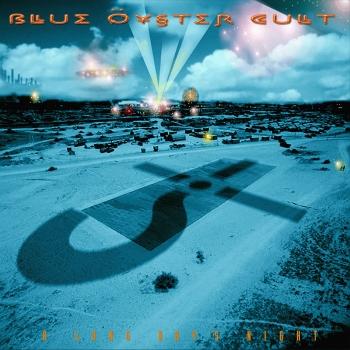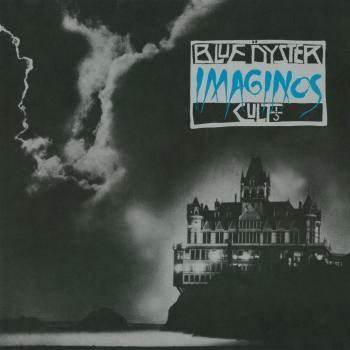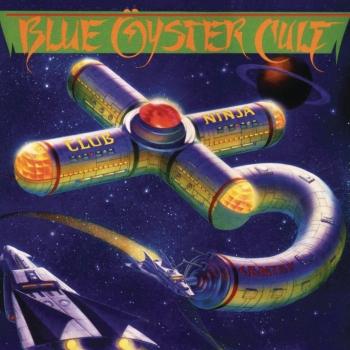
On Your Feet Or On Your Knees (Remaster) Blue Oyster Cult
Album Info
Album Veröffentlichung:
1975
HRA-Veröffentlichung:
13.07.2016
Label: Sony / Columbia / Legacy
Genre: Rock
Subgenre: Hard Rock
Interpret: Blue Oyster Cult
Komponist: Eric Bloom, S. Pearlman, D. Roeser, R. Meltzer, J. Bouchard, A. Bouchard, B. Dharma, Eric Bloom, M. KRUGMAN, A. Lanier, C. Carter, M. Bonfire
Das Album enthält Albumcover
Entschuldigen Sie bitte!
Sehr geehrter HIGHRESAUDIO Besucher,
leider kann das Album zurzeit aufgrund von Länder- und Lizenzbeschränkungen nicht gekauft werden oder uns liegt der offizielle Veröffentlichungstermin für Ihr Land noch nicht vor. Wir aktualisieren unsere Veröffentlichungstermine ein- bis zweimal die Woche. Bitte schauen Sie ab und zu mal wieder rein.
Wir empfehlen Ihnen das Album auf Ihre Merkliste zu setzen.
Wir bedanken uns für Ihr Verständnis und Ihre Geduld.
Ihr, HIGHRESAUDIO
- 1 The Subhuman 07:28
- 2 Harvester of Eyes 04:56
- 3 Hot Rail to Hell 05:25
- 4 The Red and the Black 04:20
- 5 Seven Screaming Diz-Busters 08:43
- 6 Buck's Boogie 06:59
- 7 (Then Came The) Last of May 04:40
- 8 Cities On Flame 04:04
- 9 M.E. 262 08:13
- 10 Before the Kiss (A Recap) 05:06
- 11 Maserati GT (I Ain't Got You) 08:49
- 12 Born to Be Wild 06:21
Info zu On Your Feet Or On Your Knees (Remaster)
Recorded live at Academy Of Music, New York, New York; Paramount Theatre, Portland, Oregon; Paramount Theatre, Seattle, Washington; Show Palace, Phoenix, Arizona; Long Beach Arena, Long Beach, California; P.N.E. Coliseum, Vancouver, British Columbia.
Throughout its first three studio albums, Blue Öyster Cult merged intelligently written lyrics shaded with dark occult and sci-fi imagery with a crunching attack, which helped generate comparisons to Black Sabbath and Deep Purple. As good as these records were, playing live was what Blue Öyster Cult truly excelled in thanks to extensive touring. Backing up this assertion is the band's first live album, „On Your Feet Or On Your Knees“. Although the band was still a year away from its first crossover hit, this live collection was its first album to crack the Top 40.
Powered by the duel guitars of Eric Bloom and Donald "Buck Dharma" Roeser, the band included extended versions of epics from the then-recent "Secret Treaties" ("Subhuman," "Me 262") and the prior "Tyranny and Mutation" ("Seven Screaming Diz Busters"). Other highlights include a great version of "Cities on Flame" (the band's first official single) and "Buck's Boogie," a Roeser instrumental showcase previously available on the ultra-rare 1972 EP LIVE BOOTLEG. The inclusion of crunching covers by Steppenwolf ("Born to Be Wild") and Jimmy Reed ("Maserati GT," a.k.a. "I Ain't Got You") round out what is considered by many to be the first phase of Blue Öyster Cult's career.
Eric Bloom, stun guitar, synthesizer, lead vocals (on tracks 1, 2, 4, 5, 9, 11, 12)
Donald "Buck Dharma" Roeser, guitar, vocals, lead vocals on tracks 7, 10
Allen Lanier, keyboards, rhythm guitar
Joe Bouchard, bass, keyboards, vocals
Albert Bouchard, drums, vocals
Recorded April 27, 1974, October 5–21, 1974 at Academy of Music, New York City; Paramount Theatre, Portland, Oregon; Paramount Theatre, Seattle; Washington Show Palace, Phoenix, Arizona; Long Beach Arena, Long Beach, California
Engineered by Tom Scott, Kurt Kuntzel, Aaron Baron, Tim Geelan, Pete Weiss, Jerry Smith
Produced by Murray Krugman, Sandy Pearlman
Digitally remastered
Blue Öyster Cult
Spanning three decades, Blue Öyster Cult has a long and storied history. The band got its start in the late ’60s on Long Island, New York, as the Soft White Underbelly, but each member had been involved in bands previously in high school and college, before ending up in the “right place at the right time” to create the beginnings of Blue Öyster Cult.
The threads that eventually wove together to create Blue Öyster Cult got their start in upstate New York.
Long Island native Donald Roeser and Albert Bouchard (of Watertown, New York) met at Clarkson College, in Potsdam, NY. The two were introduced by a mutual friend, Bruce Abbott (who later co-authored “Golden Age of Leather” with Donald). With Abbott and two other friends, they formed “The Disciples” and played college parties and local beer halls. The next year, the band reformed and played the same circuits as “Travesty” (named after the Blues Project album). Through all this, their studies fell by the wayside, and both Albert and Donald decided to quit college to concentrate on playing music full-time.
Eventually “Travesty” broke up, Donald and Albert took seperate paths for a while. Donald went back to Long Island, and Albert took a musical opportunity in Chicago. After moving there, though, the band fizzled, and Albert returned to NY and joined Donald. In the meantime, Donald had been jamming with local musicians, and had met a person that would become very influential in their future: Sandy Pearlman.
Sandy Pearlman became interested in rock music around the time of the British Invasion, and was a pioneering voice of rock criticism, opening a new field for creative writers like Lester Bangs. Both Pearlman and his friend Richard Meltzer were contributors for seminal magazine “Crawdaddy!,” the first magazine that dedicated itself to analysis of rock music and its culture.
Allen Lanier came into the fold by way of guitarist John Wiesenthal. Allen had accepted employment at a film company at which Wiesenthal was also an employee. After becoming acquainted, Wiesenthal invited Allen out to Long Island to meet and jam with the loose group of musicians he played with, and Allen began to regularly jam with them.
An old house near Stony Brook College became ground zero for the formative band, and casual jams with whomever happened to be hanging around began to turn into rehearsals with a core band, which included Wiesenthal, Donald, Albert, Allen and Andrew Winters, a school friend of Donald. It was 1967.
Pearlman (along with Meltzer and Wiesenthal) had been a student at Stony Brook, and was becoming increasingly involved in the music scene. When he heard the formative combo, he instantly recognized the talent at work. He had an idea for a band, and thought that this group of musicians had the chops to put that idea into play. The musicians saw that Pearlman’s contacts and stature in the local (and increasingly national) scene could help them spawn a career as well, and an alliance was formed.
Dieses Album enthält kein Booklet






















